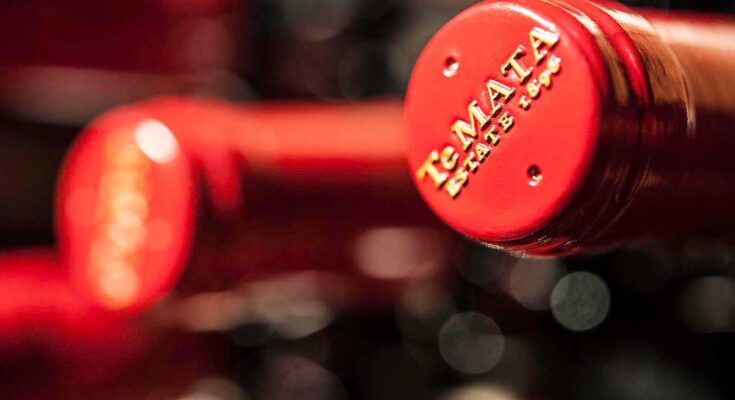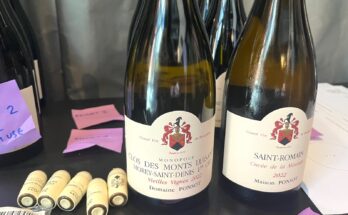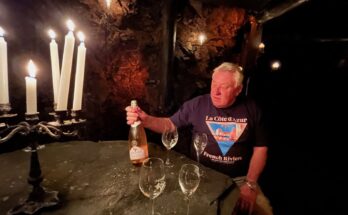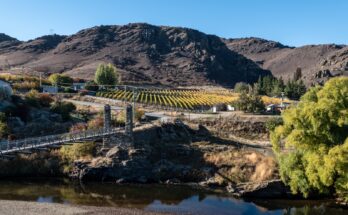A first time visiting Te Mata Estate in Hawke’s Bay. It’s the producer of the regions’ most revered wine – the red ‘Coleraine’, but has so far escaped my attentions. I’m here on a beautiful Autumn morning, and am given the tour by Zara Buck – one of the Buck family who own the Estate. Then on to a tasting with Vincent Labat, who I know from his time at Paritua, for a journey through the range of wines.
Zara Buck: A little bit of background about Te Mata. We use the term ‘Estate’ in its full definition. We do everything on site here, ourselves. Bottling and packaging all takes place on site, which is really unusual nowadays; and we own and manage all of our vineyard sites. And we are exclusively Hawke’s Bay. We’ve got a couple of our vineyards there, and Coleraine further down the road – Awatea just there. We have vineyards spanning about 280 hectares, across Hawke’s Bay. Some across the road, some 40K away – our Woodthorpe Terraces Vineyard, up the Taihape Road. We cover a few sub-regions and climates and soil types too.
We have 42 markets around the world, and we can handle all of that right here now. All back label requirements, depending on country. Even the container loading is done here, in house. It’s all go – a very hands-on process, but it is great to have it here, with an eye for the details.
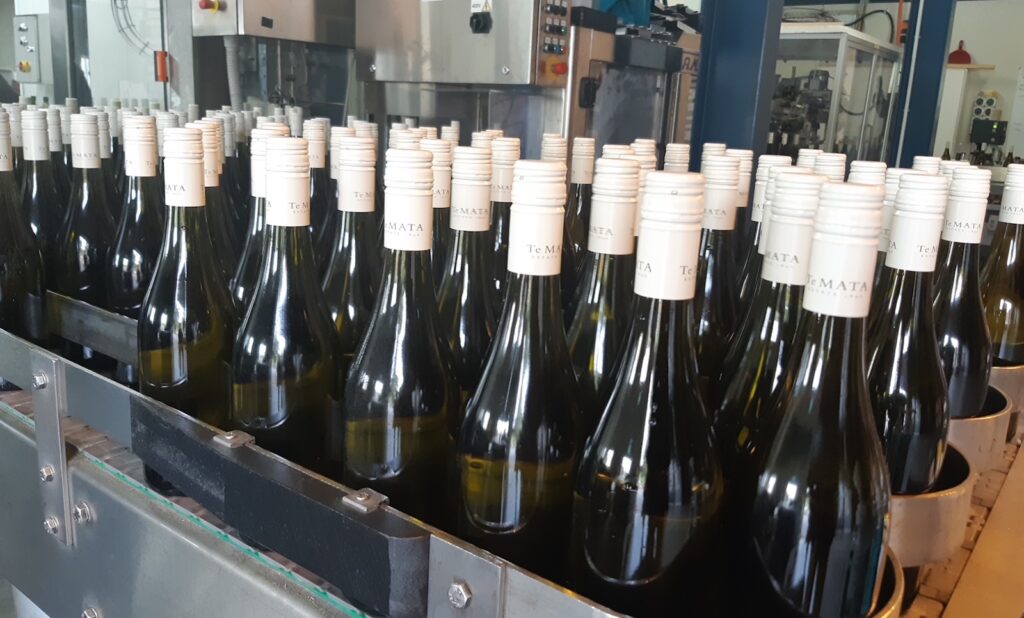
WineFolio: How many cases a year do you handle?
ZB: About 45,000 cases a year. We produce about 600 tonne of fruit, of which we keep about 300 for ourselves and sell off the rest of it, which gives us lots of options.
We’ll start off in our first year cellar and then work our way through into the winery. This is the best time to be visiting as it is full and smells beautiful. We usually have about 800 barrels in here by the end of harvest, once everything is racked into barrel. We separate everything by variety, and vintage but also by the vineyard block. It was always planned like this, to be able to keep everything separate, so we have all the components for blending options.We have about seven different coopers that we like to use. The barrels spend a good six to eight months in here, and then if it is a Coleraine, Awatea or Bullnose, every barrel is then tasted, blended and back into a barrel for a further six to eight months again.
This is all an extension – you’ll see the original brick wall just through there. These were stables that were built here in the 1870s, by English settlers – the Chambers. It was sheep and cattle farming and the stables were for the farm horses. The farm was then changed to include a working winery. When my grandparents came here there were just the original buildings, so those have all been added since – the winery, bottling, and the Cellar Door. This is my favourite room on the Estate. We call this the ‘Stained Glass Cellar’ and it was the original Cellar door. The walls are three bricks thick in here – it survived the 1931 earthquake. We had to undergo a little earthquake re-strengthening recently – to preserve the history as well.
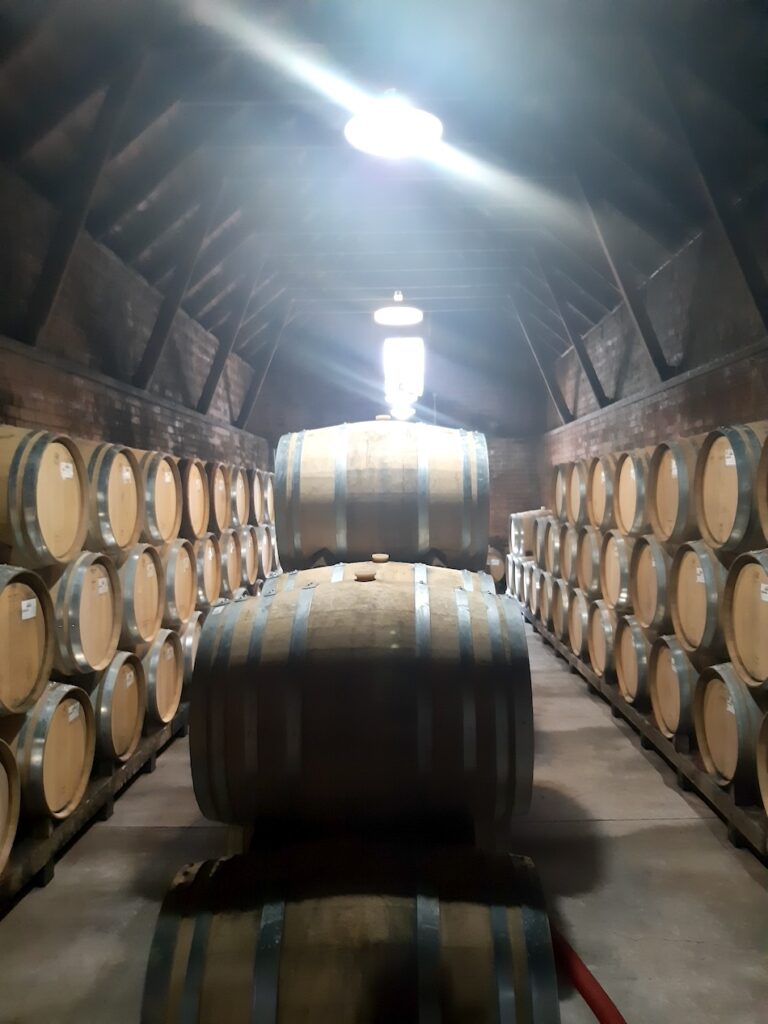
We’ve had a few events in here. A Coleraine vertical tasting with Air New Zealand and media guests a few years ago. In here are all of our Estate Chardonnay 2022 barrels, and we do have the Elston Chardonnay in here from time to time as well. I love that we’re still working within these buildings where the Chambers were.
And now, this is the brand new Red Wine Fermentation Room. In 2019 we replaced all of our large format tanks with smaller format, to be able to keep all our components separate.It gives us more room to learn from our vineyards and scope for blending.
We have a double conveyor belt system on the roof, for automated plunging three times a day. Back in the day they would have accidents – my Grandfather actually fell into a tank when plunging, and had to be pulled out. It’s modern winemaking but with that mix of heritage.
Now, this is our Second Year Cellar – this is underneath our Bottling Room. Tim is filling barrels with Bullnose Syrah. It’s one of two lots of Syrah that have just gone into barrel. This is the last of a batch of 44 barrels. Some other batches are around eighty to a hundred, so they vary in size but, for example, one batch is about two-thirds of this whole row, three high. The other batch is this entire row here. All the scanling will go down, and excision lining up, then filling all the bottom row from left and right and at the same time as they fill, placing a whole new row of barrels on top. Filling those ones and going up to a third row. It gets quite amazing.
Do you want to admire how straight those barrels are? hahaha. This gap is designed so that if you need to get a barrel out once it is empty two people can easily lift one down, and there’s just enough space, without wasting any space as well. This cellar was perfectly designed for that. Or else, it’s just a fluke. This is where all those beautiful wines come in to hibernate in their second year, for many months. It’s always busy in here though – as we take out that Estate Syrah ’21, we fill it back in with ’22 wines.
WF: It’s good to see it all in action like this. So often when you visit the barrel hall, it’s all serene and quiet. You don’t get to see the work that goes into it.
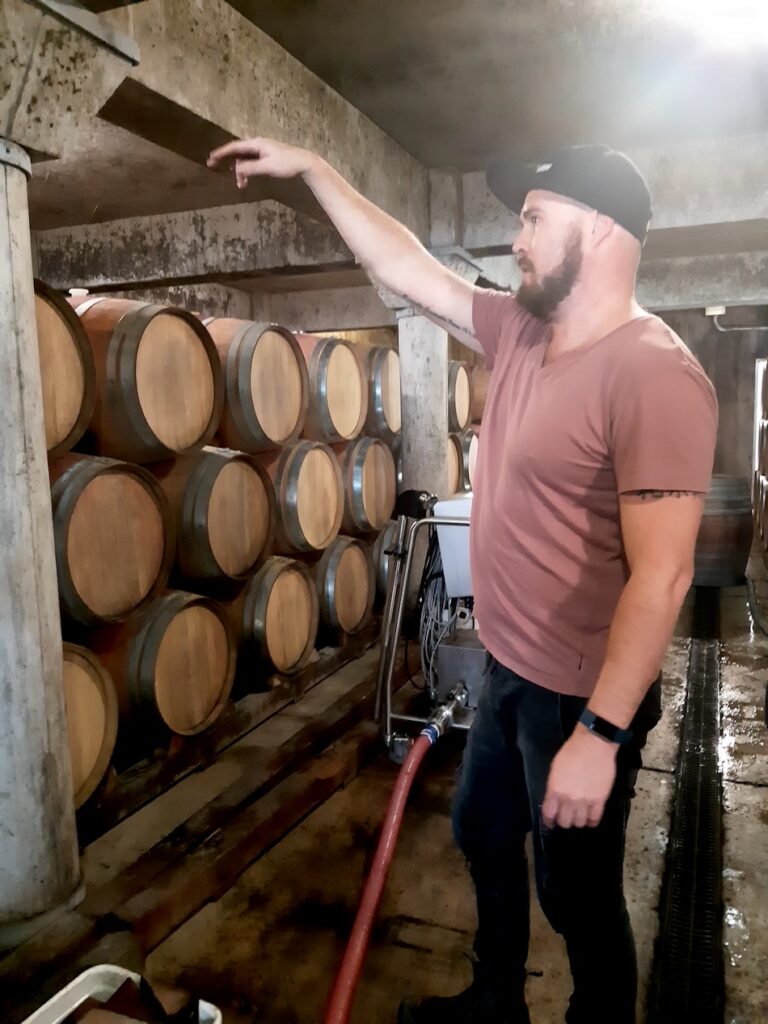
ZB: People when they’re visiting are often quite surprised how small it is. But those are the inner workings of the Estate. I’ll hand you over to Vince now and you can try some wines…
Vince Labat: How was that?
WF: Fantastic. There’s lots of stuff going on, which is great to see. I’m often at the winery in the off season and get the sanitised version. It’s all go.
VL: What I thought we’d do is run through the 2020 showcase wines. We were up in Auckland yesterday and down in Wellington and Christchurch next week. We are sold out of Coleraine, but I’ll show you these five. Have you had any of these before?
WF: Yes, you sent me the Awatea; and I’ve had the Bullnose, but not the others.
VL: I don’t know how much Zara filled you in on Coleraine, but demand has been phenomenal. We went on sale on the first of March and just before the 30th of April, all stocks were exhausted, and allocated. You’re from the UK originally, and maybe familiar with The Wine Society? We did an En primeur campaign with them, and they only do two other New World wines – but we could only allocate them X number of bottles. It was over-subscribed by five times, and they came back to us asking if they could please have some more? We had to say sorry.
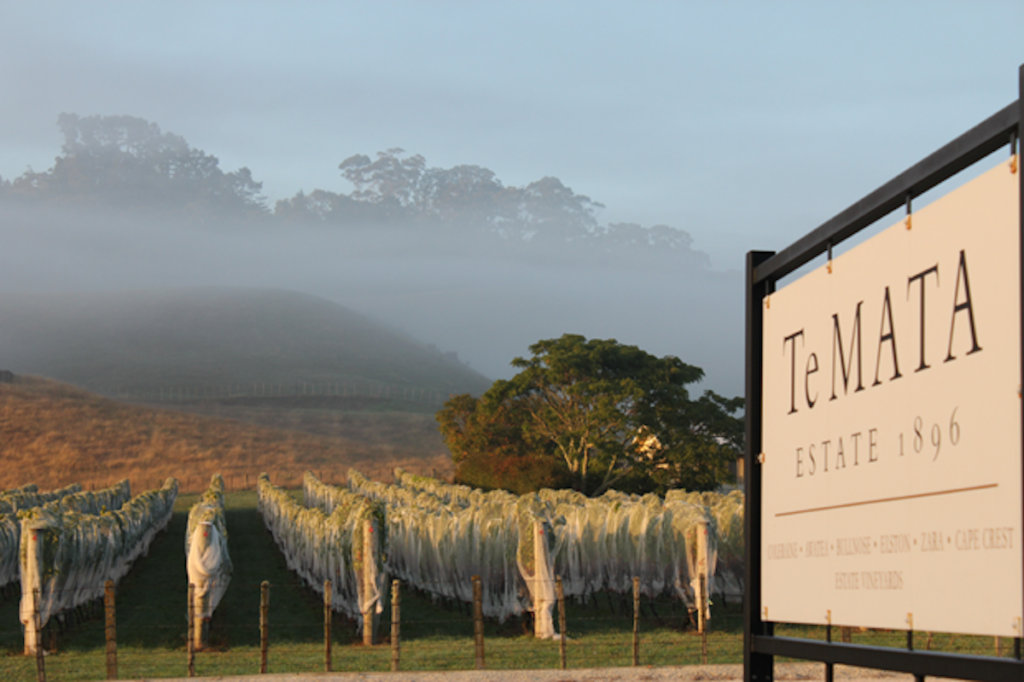
The brand and the wines are in a very good space. Particularly after ’18, ’19 and ’20. Hawke’s bay has been blessed with some phenomenal vintages. We’ve also just started with a new, prestigious importer in the USA called Wilson Daniels, who have been working with Kumeu River for many years. And the US market is a whole other mass. We are going to be 25 years with our Australian importer next year. It’s very encouraging to see the growth. People coming to the Cellar Door; wanting to buy direct from us.
This position came up this year, and I knew the wines – classic New Zealand blue chip; but what struck me as I came in was this ethos of continuous improvement and refinement. There’s a lot of investment in R&D. Working with the Callaghan Institute, looking at our viticultural practices and sustainability. These vineyards behind you have been vineyards for 120 years – so that’s a mono-crop. And if you keep taking out of the soil over that length of period, then the health of the soil is not going to be what it should be. So regenerative viticulture is a huge part of what we do. Te Mata is not chasing certification but we do do biodynamics. We practice biodynamics, organics and we practice conventional farming. We are very much looking at the future. Big investment in the winery. Huge investments in the vineyards. Always looking at the quality of the wines.
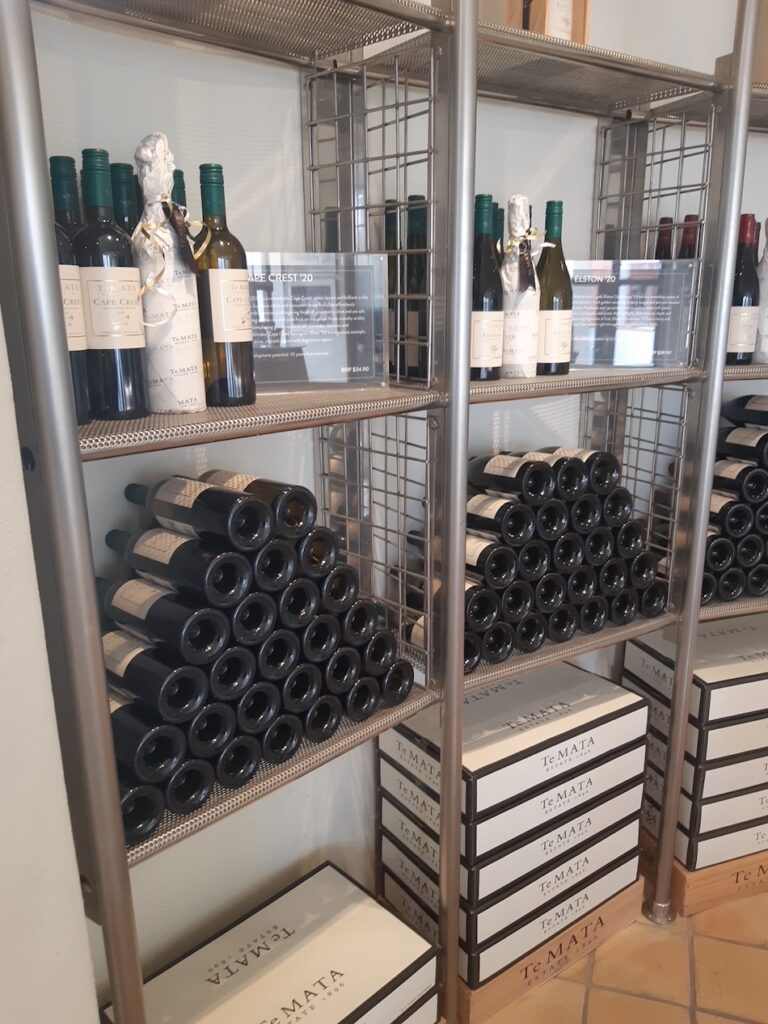
WF: So not just dogmatically following one thing. Doing what is best for what you have got?
VL: Exactly right. There’s a lot of regenerative work – inter-row plantings, the microbial content of the soil. Biodynamic principles and what is that doing for us? Not just the quality of the fruit, but of the soil. The other thing that has struck me is the investment. Including investment in personnel. Larry Morgan was a viticulturalist here for 35 years. When he got to the age of 63 he told the board – I am going to resign when I am 65. Brenton O’Reilly who is the new viticulturalist, was employed two years before Larry retired, for a two year handover period.
Always looking forward to how to improve. And there’s no billionaire backer here. It’s all family owned, has been since Day 1, and for 126 years. It has to be sustainable and economically viable. It’s a real circle, where the profits are put back into the business. Investment, growth, refinement.
Te Mata has, in recent years, invested in two vineyards in the Gimblett Gravels, where we never had those before. We had two vineyards in Bridge Pa Triangle – Syrah on one, and Semillon, Sauvignon Blanc and Chardonnay on the other. Here on the Havelock Hills – clay and limestone – Bordeaux varieties for over 100 years, but also a very strong Chardonnay vineyard – the 330 vineyard up on the plateau. This is where most of the Coleraine and Awatea come from. Woodthorpe Terraces is forty minutes inland and much more elevated. Are you familiar with the Riflemans vineyard?
WF: Well, I haven’t been, but I love the wines from there, and I have a vague idea where it is.
VL: It’s an East-West valley, so the wind flows down there and it gets much cooler nights, but still warm during the day. The Woodthorpe Terraces vineyard is across the river from the Riflemans Vineyard. That is where we have Chardonnay, Pinot Noir and Sauvignon Blanc. Our fourth sub-region is now Gimblett Gravels. Two vineyards purchased there – they were the Crossroads Vineyards. Purchased around 2014 I think, when Yealands put that on the market. So, again – where can we improve? So we can now get some Gimblett Gravels Syrah and Cabernet, to bring into what we are doing. That’s my insight – as a new person.
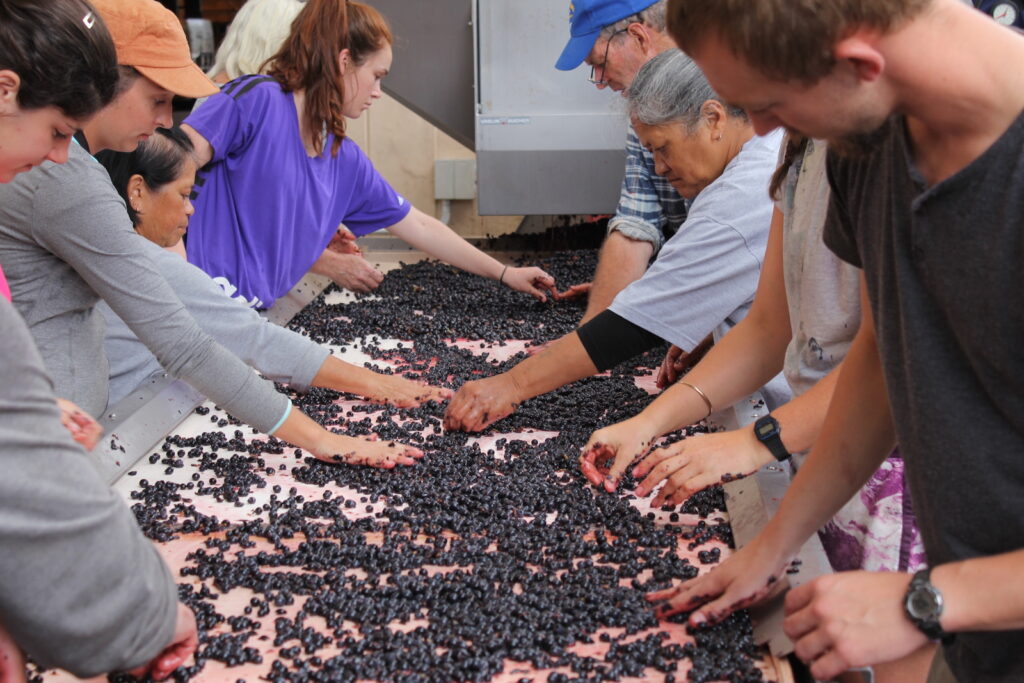
WF: I had an interesting thing happen recently. Like I’m here doing a Chardonnay event – a colleague of mine does a Pinot Day event annually, and we were in Martinborough this February, at Dry River. We were trying some wines, looking at the development that Wilco is doing in the Estate wines, and we took a couple of wines along as well. A bottle was brought up out of their cellar and served to us blind. I could tell it wasn’t ‘typical’ – so not Martinborough or Central, and I didn’t think it was from Marlborough either. So I was thinking was it Kumeu River, or maybe Lime Rock – possibly either of them being inland Hawke’s Bay… and it was Te Mata Alma Pinot Noir!
VL: We’ll start with whites – this is our Cape Crest 2020. Predominately Sauvignon Blanc, but a blend, with a little Semillon and Sauvignon Gris. 100% barrel fermented, wild yeast and a portion of new oak. Sauvignon Blanc the Te Mata way – really unique compared to a lot of what’s going on in New Zealand. For me, texture – mouthfeel. That savouriness on the length of finish. A salinity as well as all sorts of complexity and structure. Just explosive – a beautiful wine to start a tasting. first made in the 1980s, where Te Mata had very much been about Bordeaux styles, and to have the white Bordeaux alongside. Not just beautiful New Zealand fruit, but structure; so this wine will age a long time. The Bridge Pa Triangle ‘Isoceles vineyard’ is where the majority of it comes from.
WF: And Sauvignon Gris. That’s unusual.
VL: Things like Sauvignon Gris, Semillon, Gamay Noir and Pinot Noir. These are not typical Hawke’s Bay varieties.
WF: They are classic varieties though.
VL: Yes, and everything that Te Mata does is classic. But best foot forward – does it play to Te Mata’s strengths, either in site, or in blending options and capabilities? The Semillon, giving a bit more volume to the wine on the palate.
WF: I like the small amounts of elements that are in this, and they just gradually add up to something wonderful. Just a little spice, a little savoury – there’s so much going on in that wine but nothing is shouting.
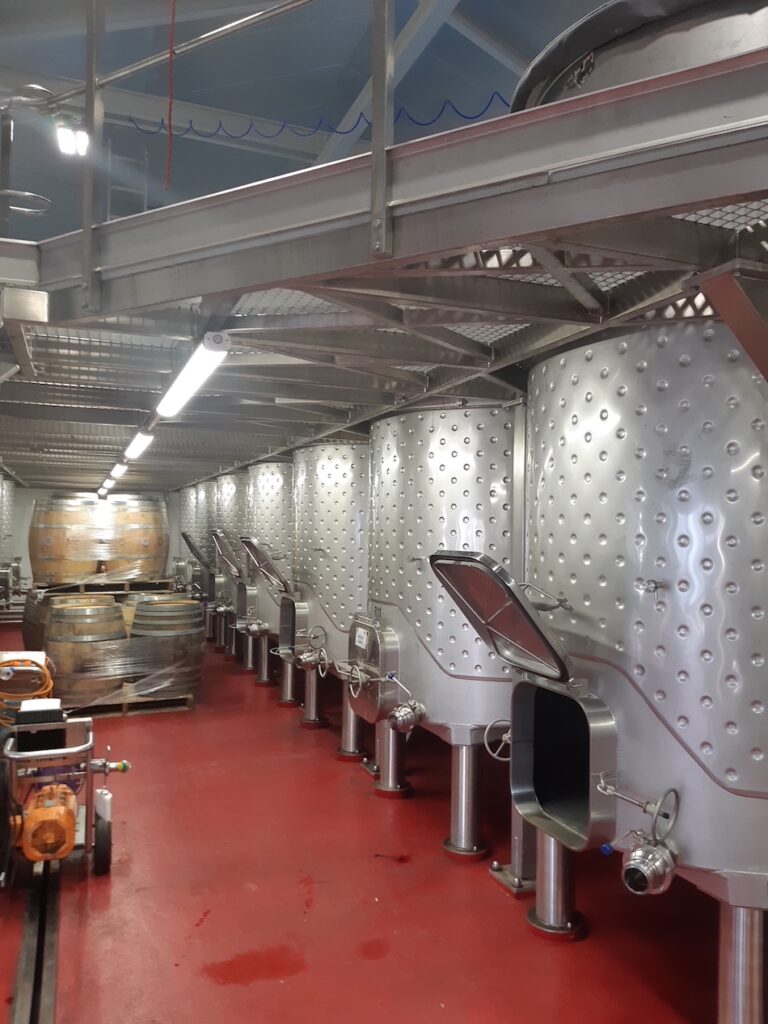
VL: It’s a unique Te Mata twist on Sauvignon Blanc. And, up next is ‘Elston’ – in ’20 the majority from the 330 vineyard up on the plateau there. Freshness and balance. A limey acidity to it. It is meshing together beautifully. The first time in screwcap ever for 2020. The Cape Crest first time was the previous vintage in 2019. After fifteen years of trials! And the technology in those fifteen years has also moved on! So the wad on the inside now, in terms of oxygen ingress has changed. So not just looking for fifteen years in terms of vintage to vintage in cork, diam and screwcap; but how does it age in those different closures? So now all under screwcap – apart from some for R&D.
WF: Yes, well, yet again, it is a benchmark Hawke’s Bay Chardonnay. Great balance and over time I’d expect that to develop more richness and nuttiness. I love a wine that has character and personality. I’m after a wine that I love, not just something that i think is ‘OK’.
VL: Another term our winemaker, Phil Brodie, uses a lot is the digestability factor of the wine. So you are reaching for that second or third glass. That wine not being heavy or cloying. Not just the taste, on the nose or on the palate, but actually the digestability. This is made with that in mind. It comes from the European custom where it was rare to drink wine on its own – wine was on the table, it was with food.
WF: I think drinking wine on its own is a new thing. Possibly even a ‘New World’ thing.
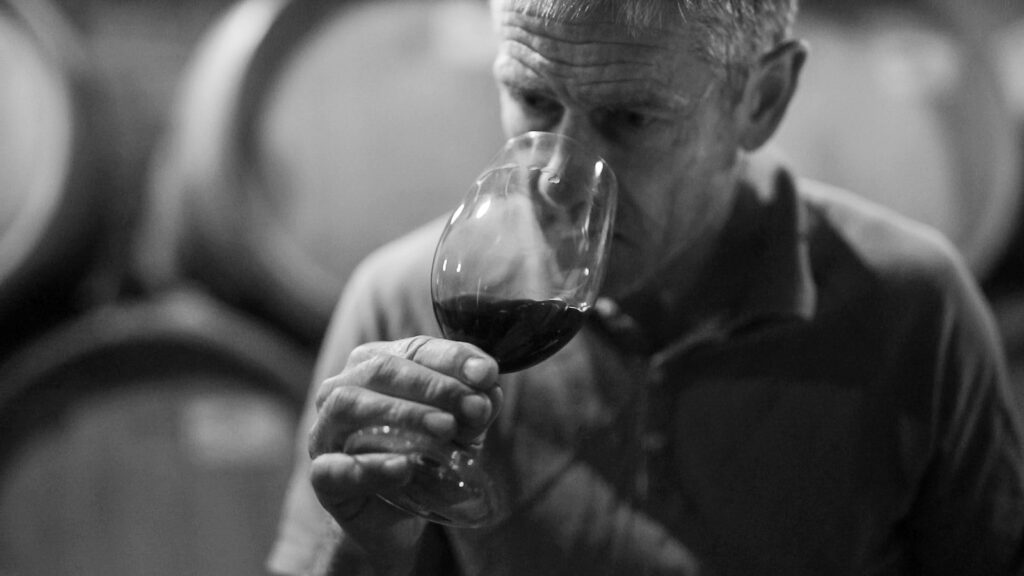
VL: 2020 was the COVID vintage, and on the 27th March I think it was – that we all went into a national lockdown, which is the back end of harvest and vintage. We still had some very important Cabernet fruit out there, going into Coleraine. So it could have been a vintage that was disastrous in terms of finishing some very important wines. Very memorable for that, but also for the quality of the vintage. Aside from the COVID situation there was no pressure on when to harvest.
So – Alma. This is all single vineyard, from the Woodthorpe Terraces vineyard in Dartmoor Valley. Te Mata first planted Pinot Noir in 1999. The first vintage release – only 2018. Up until that point the fruit was sold to other wineries, whilst Te Mata were waiting for vine age, for making wines with complexity and quality that would befit one of the showcase wines. This is now the third vintage of Alma, and it is the smallest volume of wine in the lineup.
WF: What clone is it?
VL: Various clones – 777, 114, 667, a bit of Abel, and some newer clones that I don’t have the information for. You can feel quite a rich mid-palate for a Pinot, but on the finish there is more savouriness. For me it is more akin to Martinborough than it is to Central. Unmistakably Pinot characters, but in a Te Mata way. Accentuating the site.
WF: Once again, it has got lots of beautiful little pieces within it. That lovely rose petal perfume, then quite delicate and agile at the front, then into a robust, rich mid-palate with a note of incense and smokiness – and then that lightness of touch is there again at the finish. Really fine tannins, and a distinctive briney note in there as well. Quite complex, with that power behind the delicacy. That’s my style of Pinot.
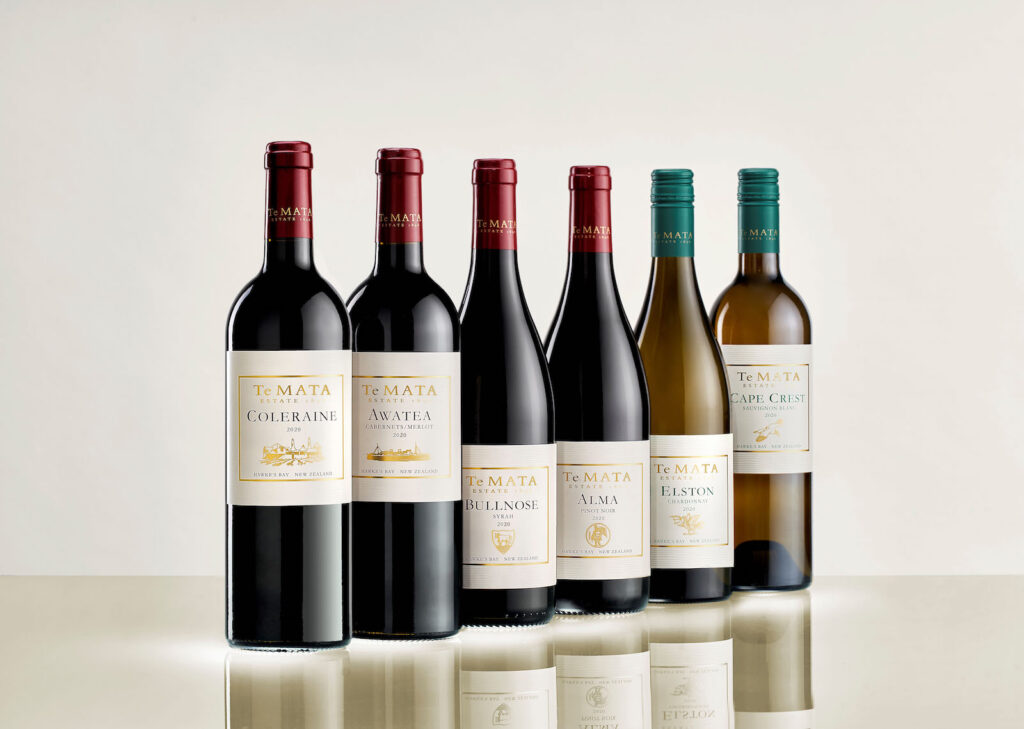
VL: Moving on to Syrah. This is ‘Bullnose’.
WF: I swear about two thirds of people who I talk to about New Zealand Syrah, will say that this is one of their favourites!
VL: Yes, it has a fantastic reputation. After Stonecroft planted Syrah, Te Mata was the second – the Bullnose Vineyard is in the Bridge Pa Triangle – planted in the mid 80’s and has been a very important wine for Te Mata. The tannins are quite soft and really integrated, and along with those beautiful aromatics, it means it is quite accessible quite young. When you make a great wine, from a great vintage, it is often quite accessible early on. Gimblett Gravels have done a great job of marketing, but the Bridge Pa reds have a more aromatic and perfumed profile, I find.
So – Bordeaux. Cabernet Sauvignon, Merlot and Cabernet Franc. A very classic blend that Te Mata has been doing for years and years. You could call it the second wine of Te Mata. It is farmed and made exactly the same as Coleraine. It is only at assemblage and blending that they are separated. And when it goes into the second year of ageing, after blending… the Coleraine will spend longer in barrel. But the site, the farming of it, and making of it are exactly the same. Predominately Havelock Hills, but also some Cabernet off the Gravels.
WF: I do find, also, that the percentage of Cabernet Franc in the blend is important – from 10% to 20% makes such a difference, in that nuance of smoky, forest floor element it brings.
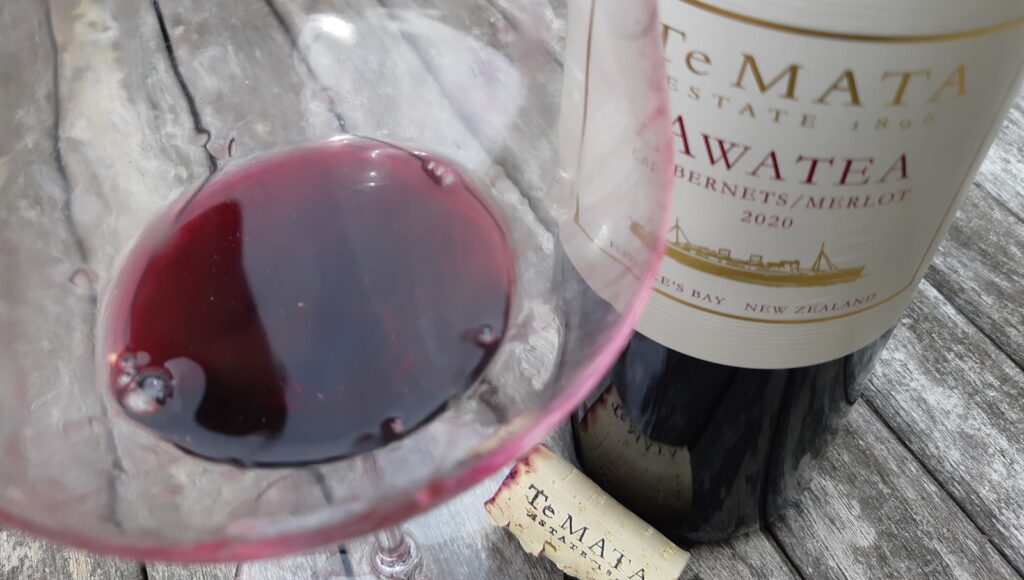
VL: I’m getting pencil shavings and a dark cassis flavour from the Cabernet, then mid-palate there is a richness from the Merlot, and the Franc finishes it off. The sum of the parts makes for the better final blend. And with years and years ahead.
WF: And I expect that people are turning to this now that the Coleraine is all sold out.
VL: Very strong demand. And this is sub-$40 – a lot of wine for $39. Pound for pound, for what’s in that bottle, the Awatea really stands out.
WF: And you can draw a comparison with the Cape Crest. A wine of absolute pedigree, with power and precision, and that is sub-$30.
VL: The Bordeaux here is more John Buck. The Syrah is Peter Cowley, and the Pinot is more Phil Brodie. Each one has put their stamp on it. And not in a short time – over fifty years. Bordeaux is very much John. That’s where the relationship with Chateau Margaux comes from. He spent a lot of time in Europe and in the UK. He was a Wine Buyer and distributor both there and in New Zealand, before purchasing Te Mata. So not only on the palate, but what he saw in the florals and aromatics. So if you do open a bottle of Te Mata Coleraine or Awatea just note those aromatics on the nose. We’ve had several reviewers who have looked at these wines over many years, and the feedback we have had this year is that the 2020 is the best Awatea we’ve ever had. It’s a special wine.

